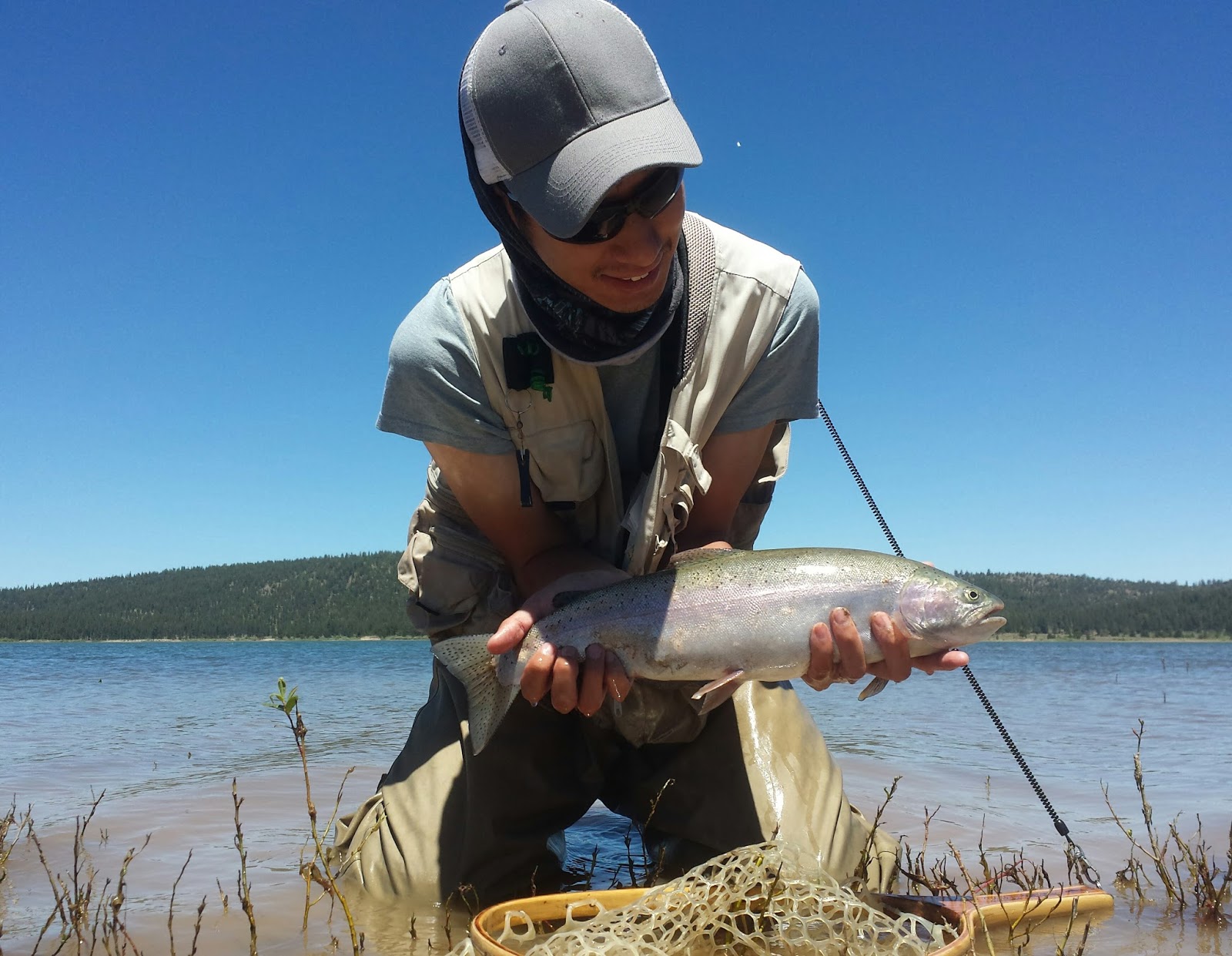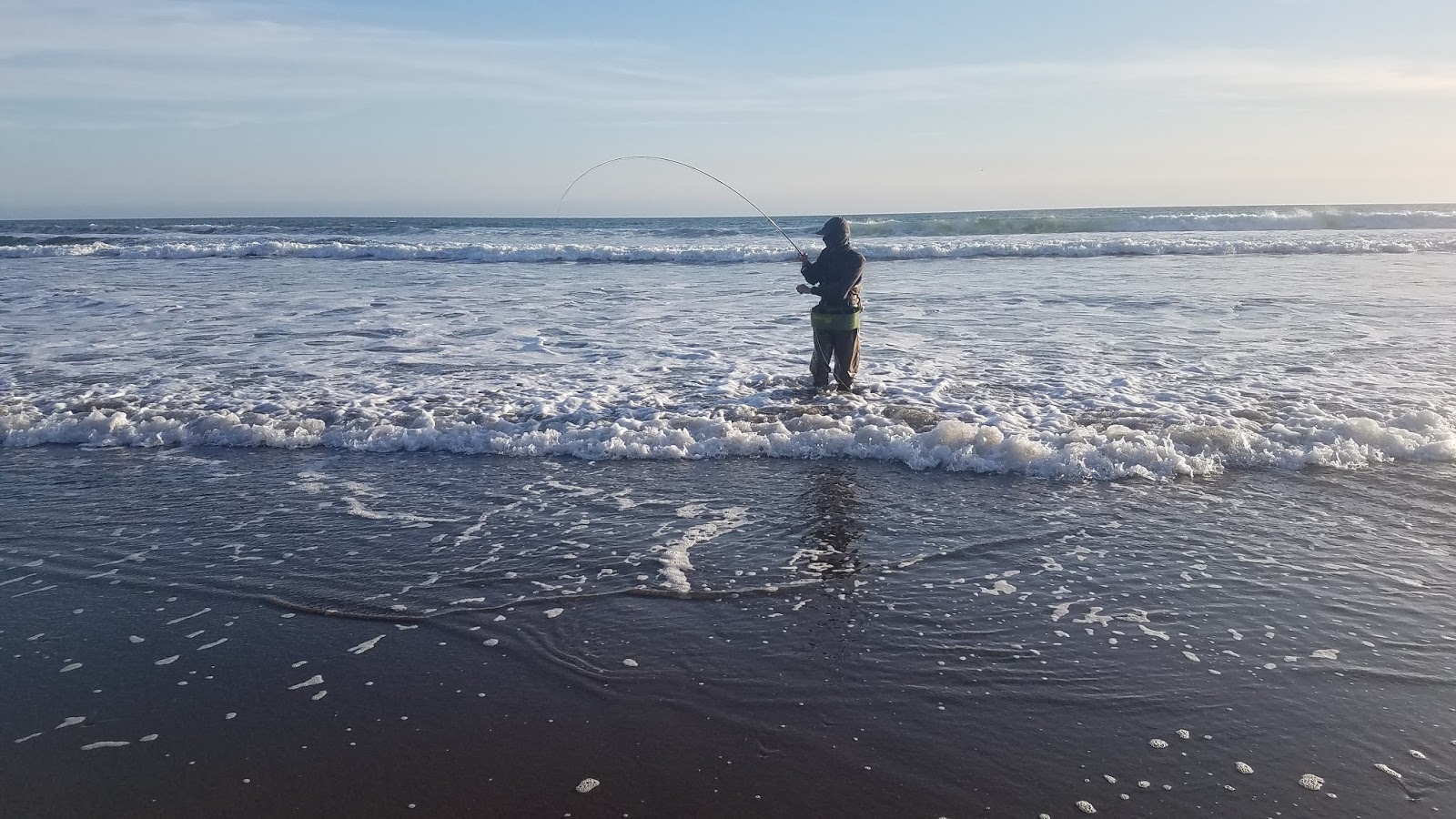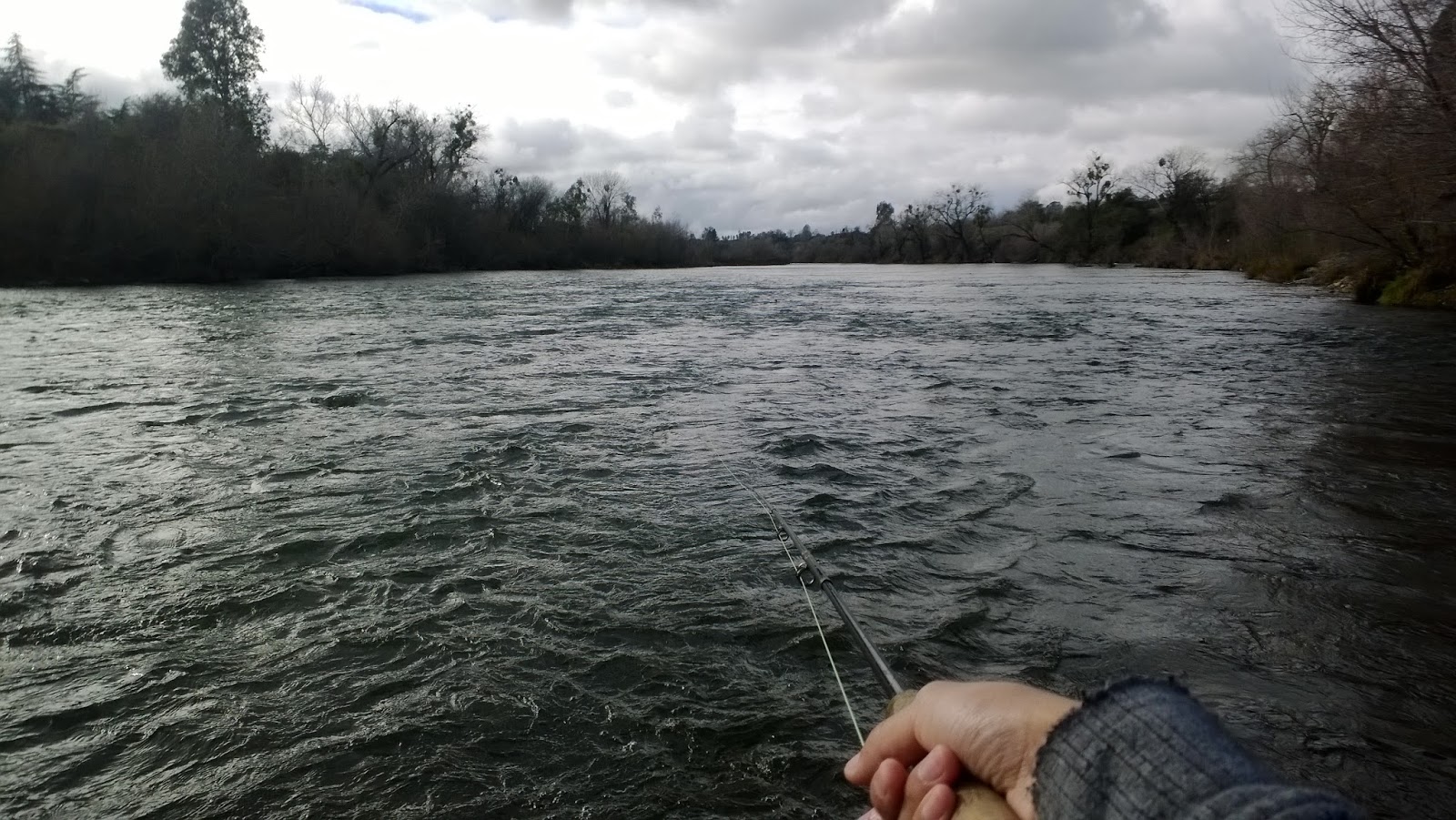Damselflies will often make their first appearance when the water temperatures rise in the late spring and early summer. Although they can be found in virtually every body of water they are particularly abundant in weedy shallow lakes. The great damsel migration begins when large numbers of damsel nymphs begin to wiggle away from their underwater homes to try and reach the shore where they climb to the surface to molt into adults. Aquatic predators will often key in on the migration and gorge themselves until the migration ends.
The Dancing Damsel is a pattern that I came up with to try and match the naturals that I observed. During the migration the fish aren’t too particular about what patterns you use however they soon wise up as the fishing pressure increases and they are continuously fooled.
I believe that most commercially available damsel nymph patterns are either too big or too long. The majority of the nymphs I’ve observed here in California are a little bit over an inch long with slim bodies. Tie this fly in light olive, olive, and brown to match the naturals. Fish hunting damsel nymphs are usually cruising near the surface therefore a floating line with a 4x leader will get the job done. Use slow short strips and make three to five second pauses in-between each strip. Strikes can be subtle so be prepared.
Dancing Damsel
Material List
TMC – 2457 – Size 14
Uni-Thread – 8/0 – Olive
Mono Eyes – 10# 0.012′ test
UTC Ultra Wire – Olive
Mercer’s Buggy Dubbing – Olive
Peacock Herl
Marabou Plume – Light Olive
Pheasant Tail – Olive
Fly Tying Instructions
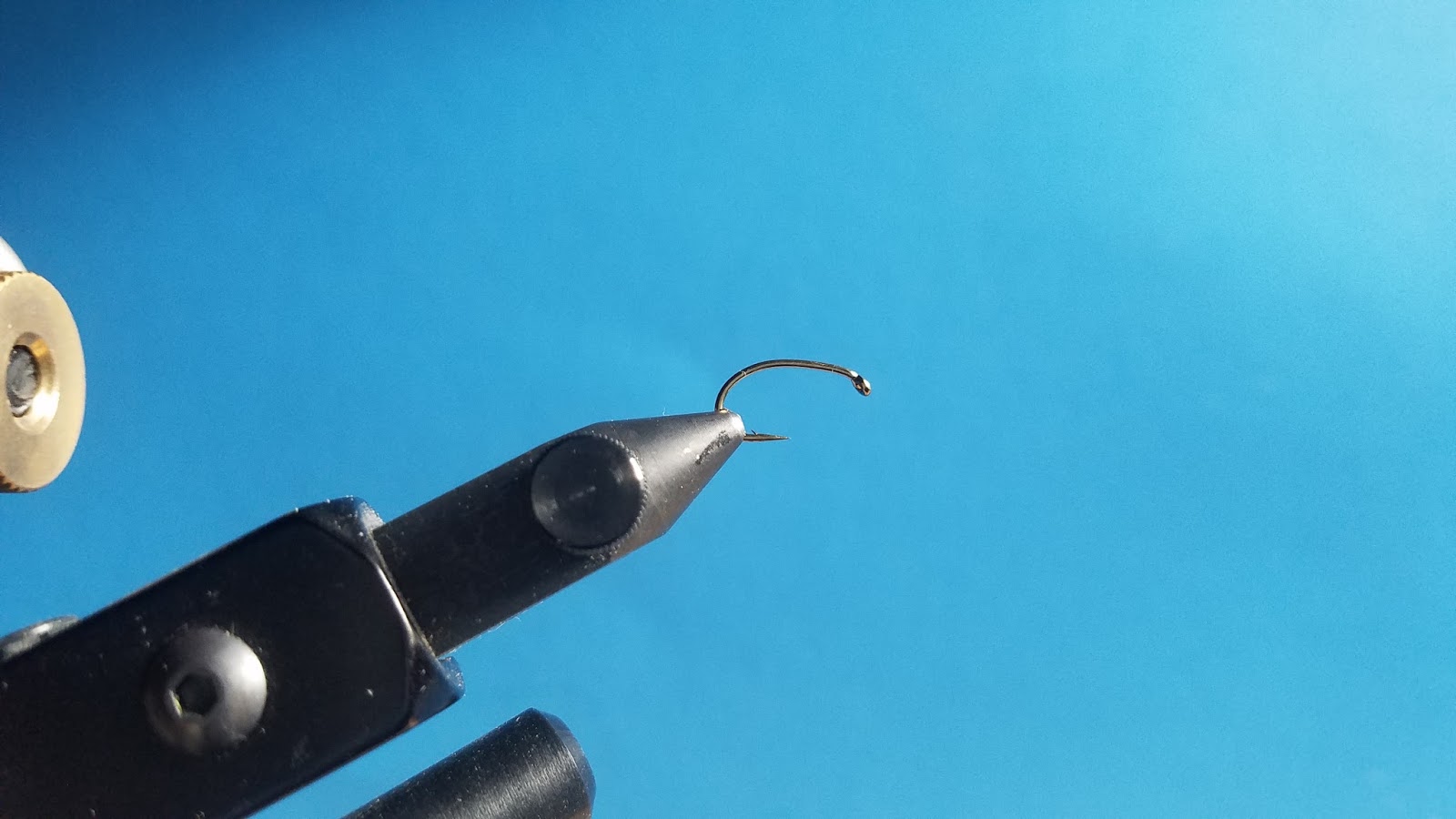
Step 1 – Set up your hook
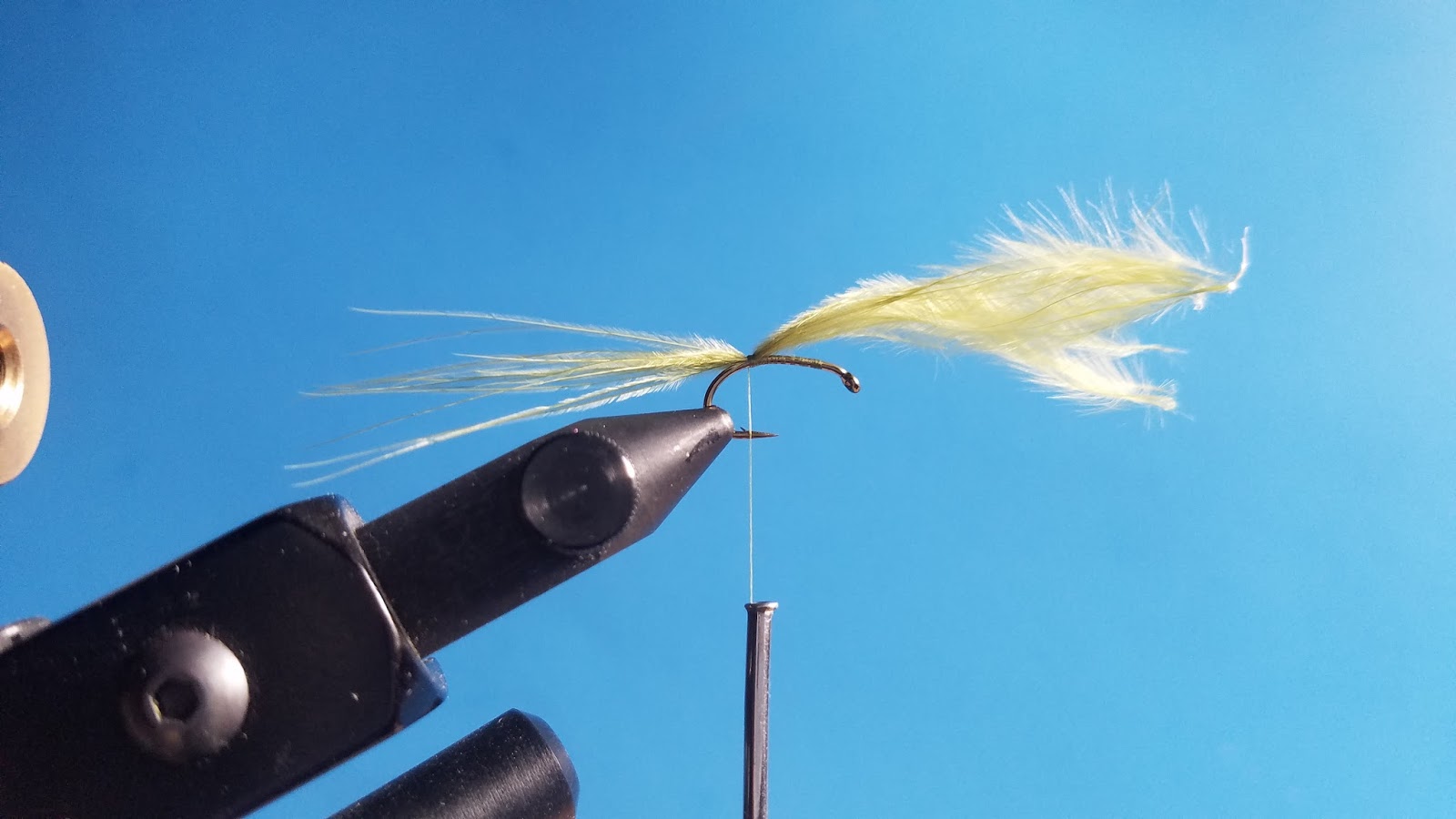
Step 2 – Start your thread and tie in about ten strands of marabou fibers.

Step 3 – Tie in your wire
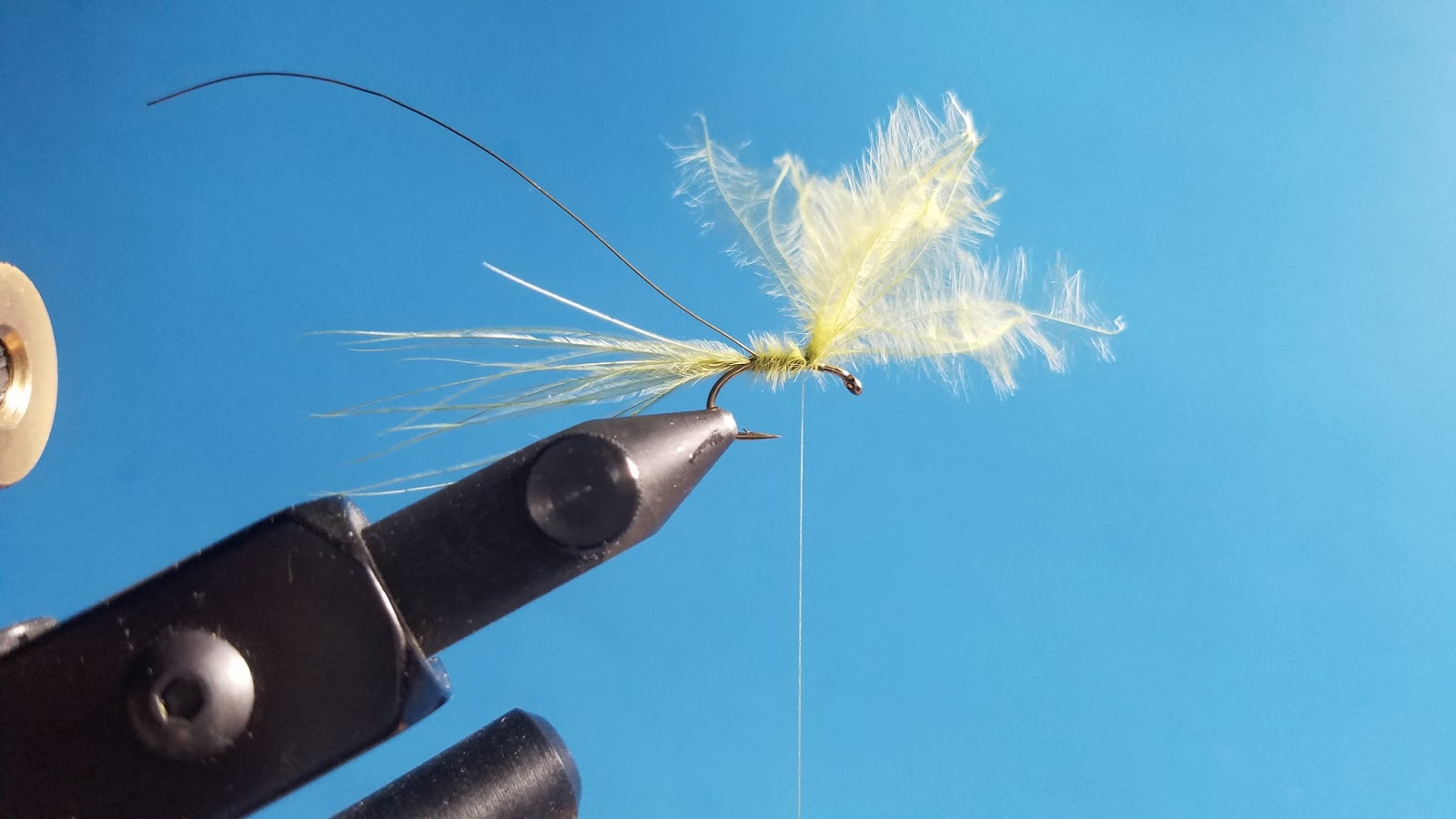
Step 4 – Wrap the excess marabou fiber butts to about 2/3rds the eye of the hook and cut off the remaining excess.
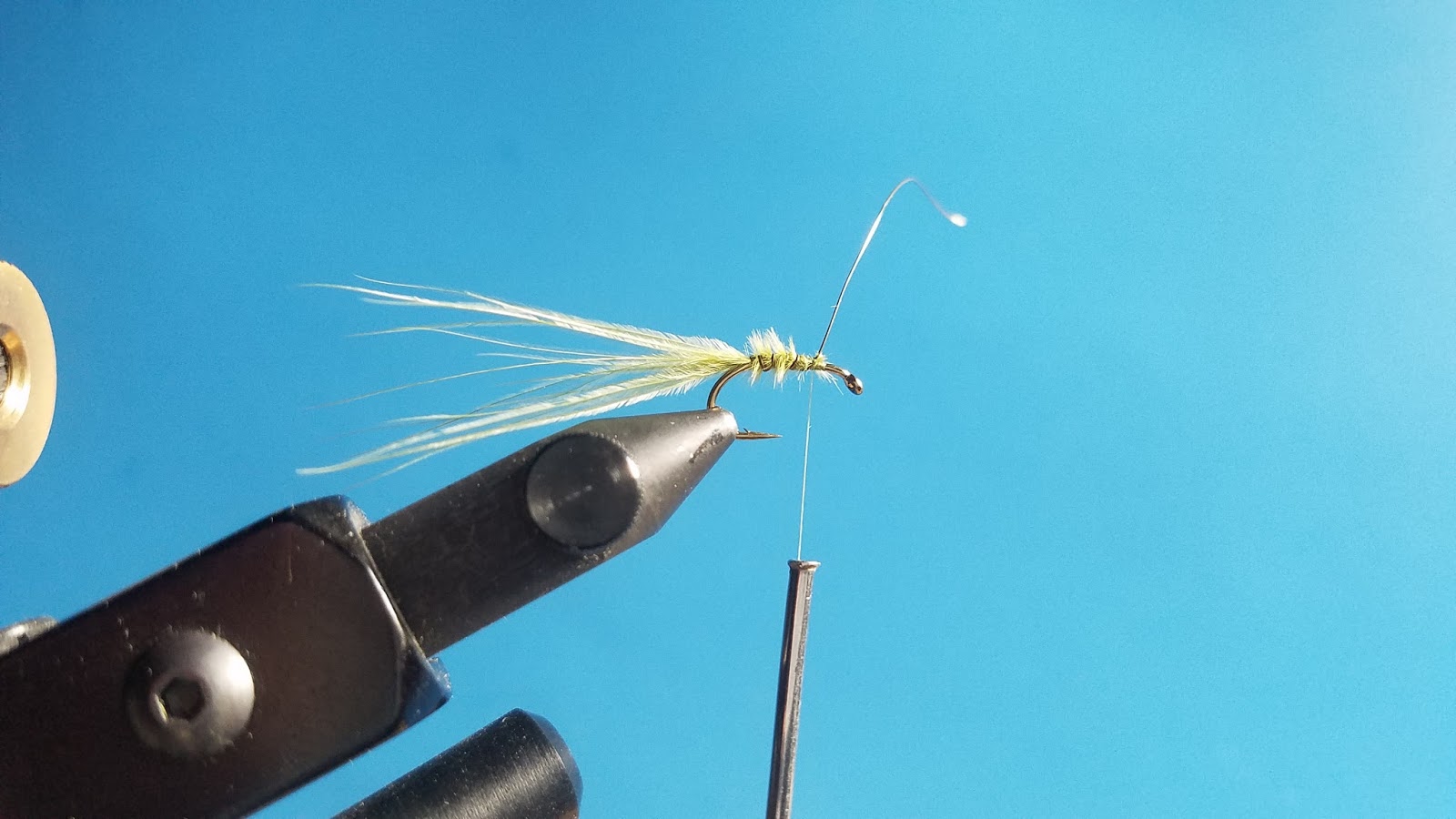
Step 5 – Wrap the wire to form the ribbing.
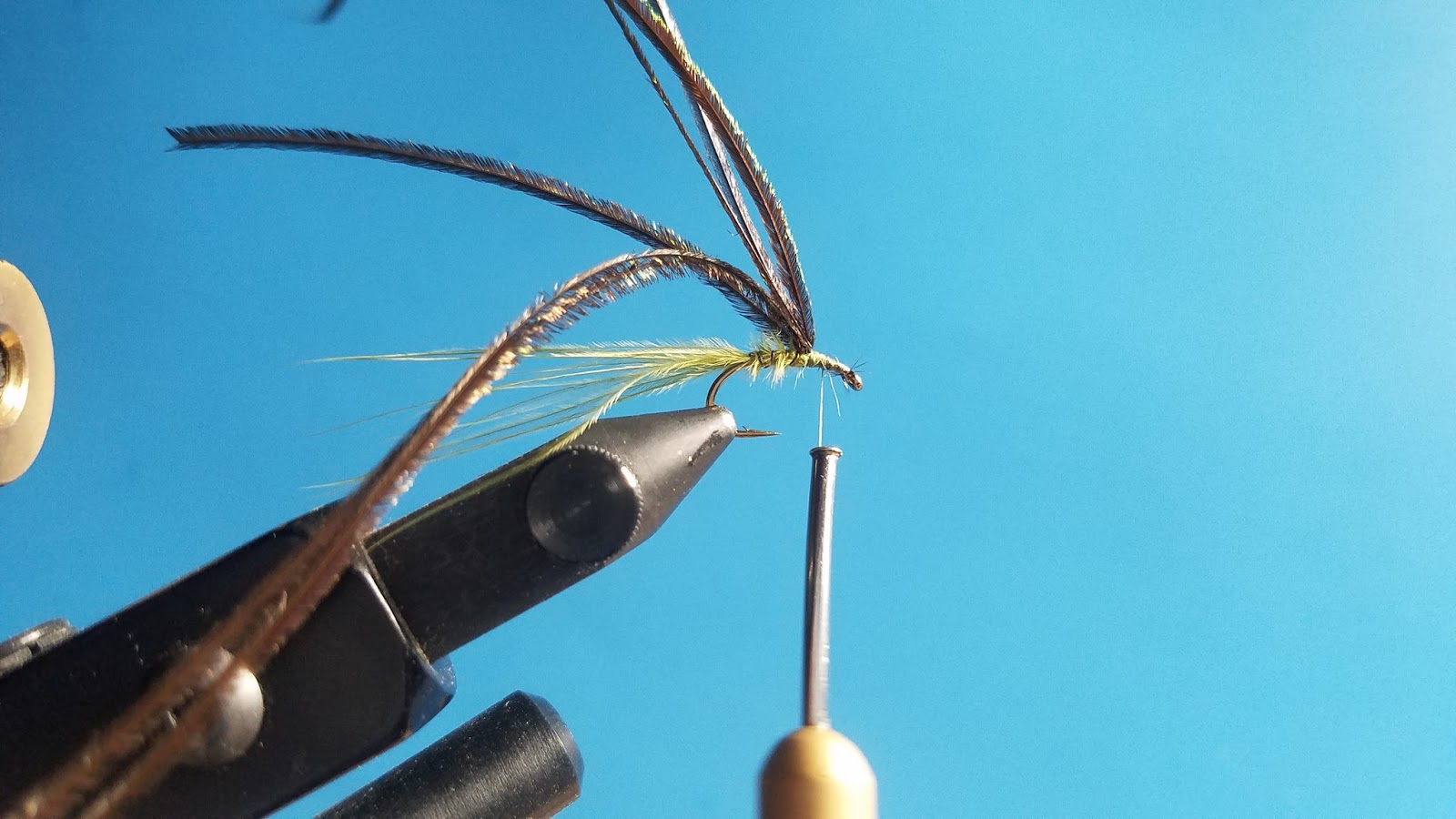
Step 6 – Tie in about five strands of peacock herl. Pull them back for now so that they are out of the way.
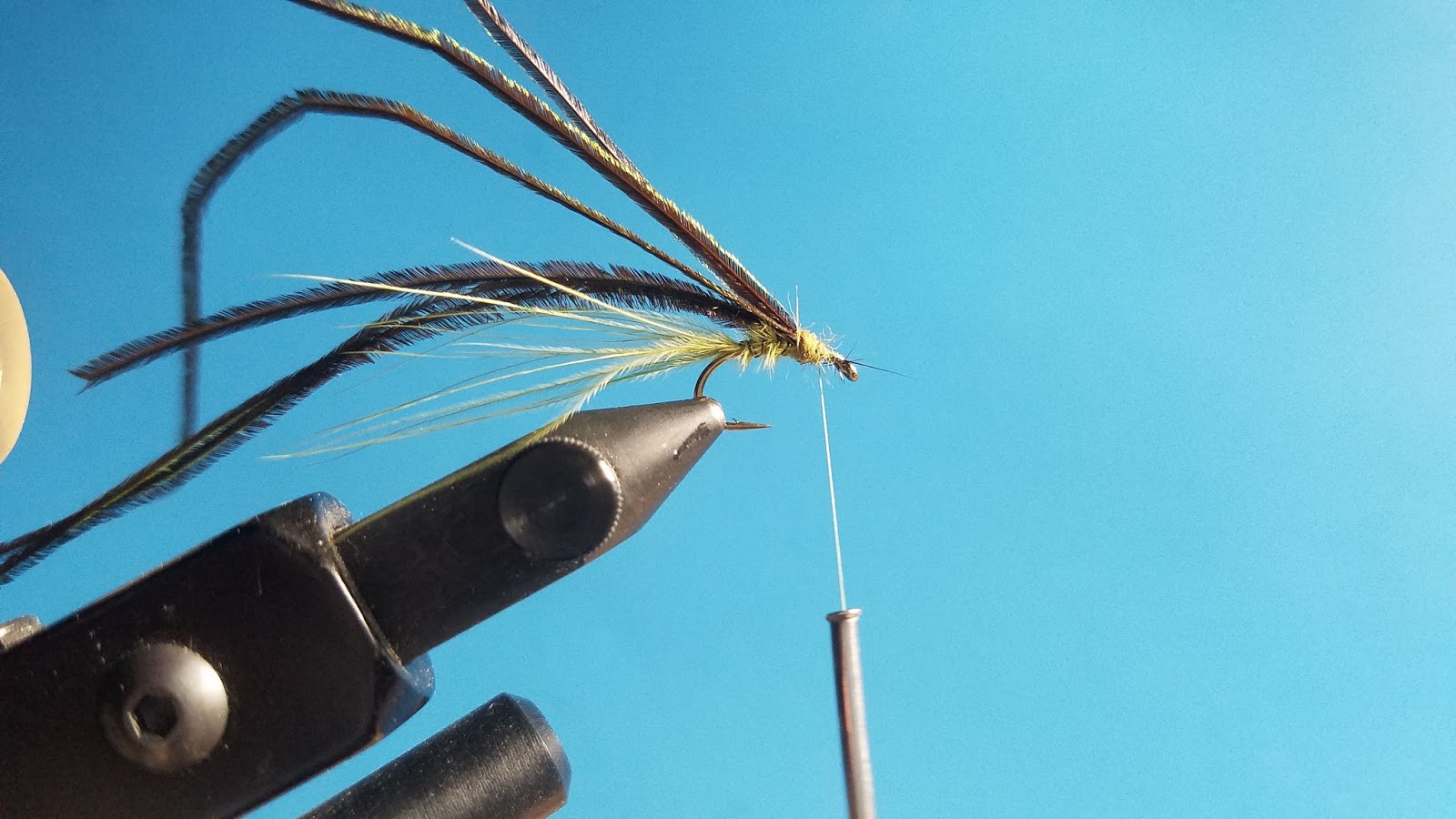
Step 7 – Dub in some dubbing halfway up the bare shank.

Step 8 – Tie in three pheasant tails fibers on each side to represent the legs.
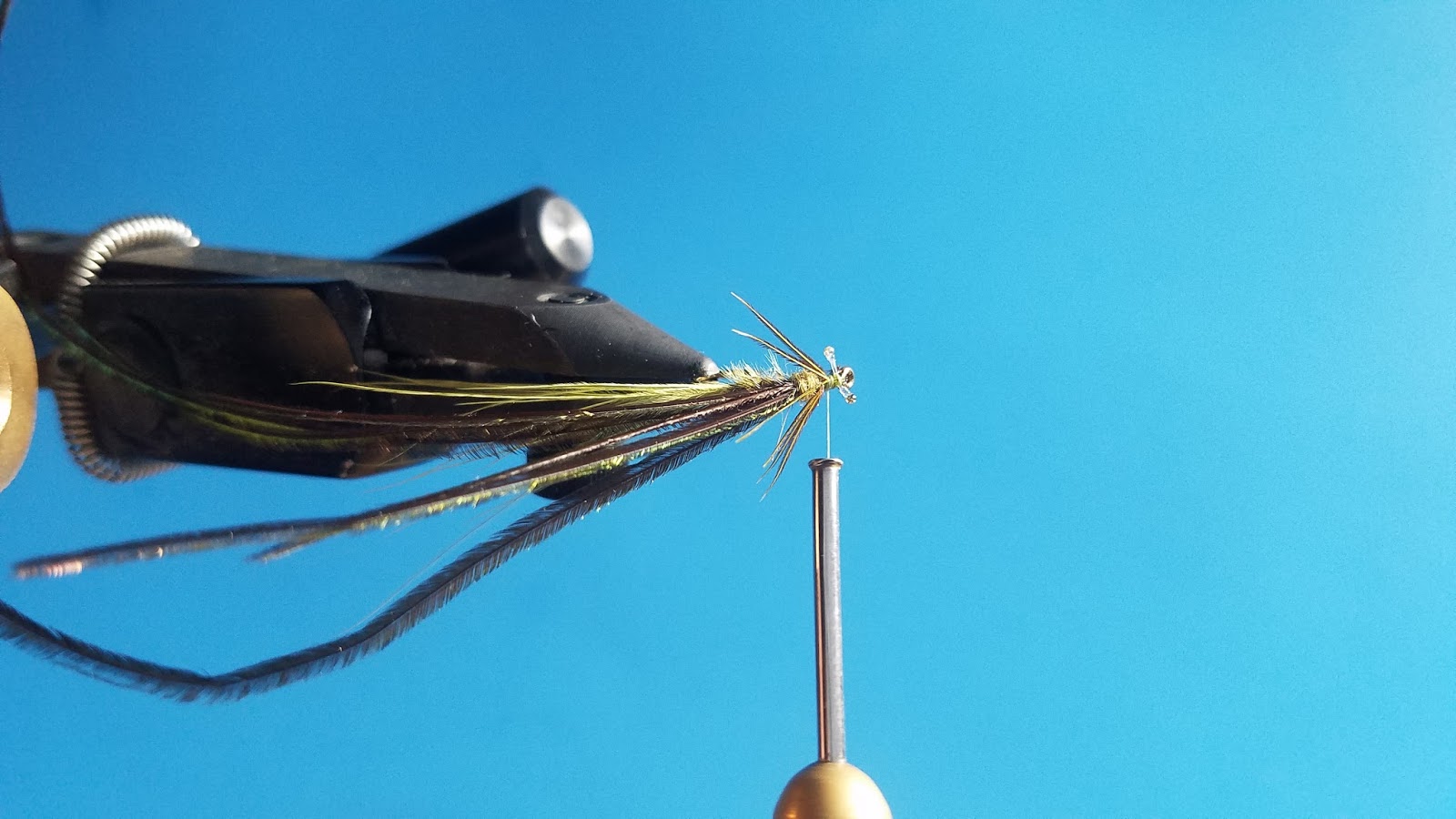
Step 9 – To make the mono eyes cut off a bit of 10# monofilament and burn off the ends until you get the shape you want. Tie in the mono eyes using a few figure-eight wraps.
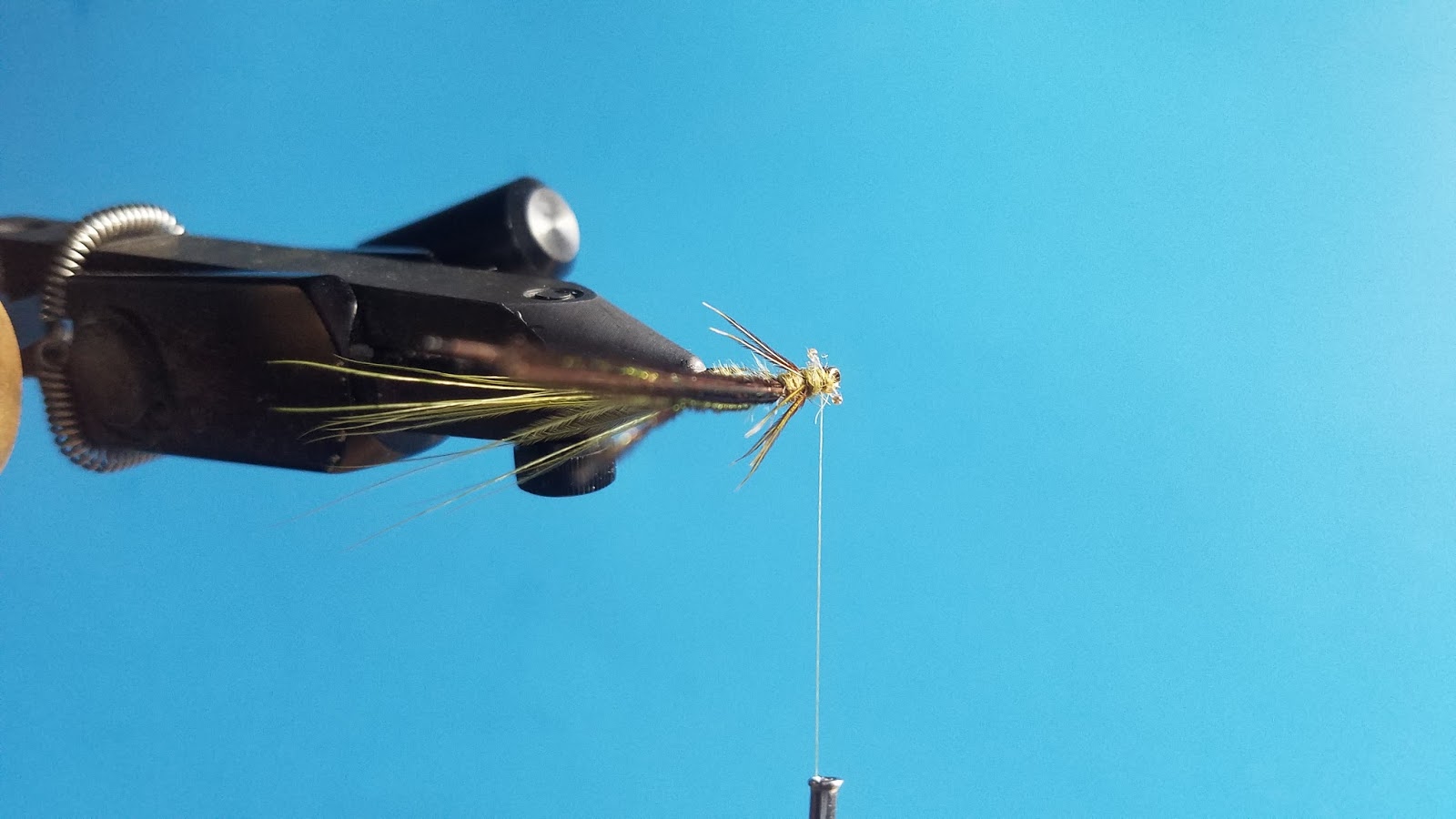
Step 10 – Add in a bit more dubbing to hide the legs.
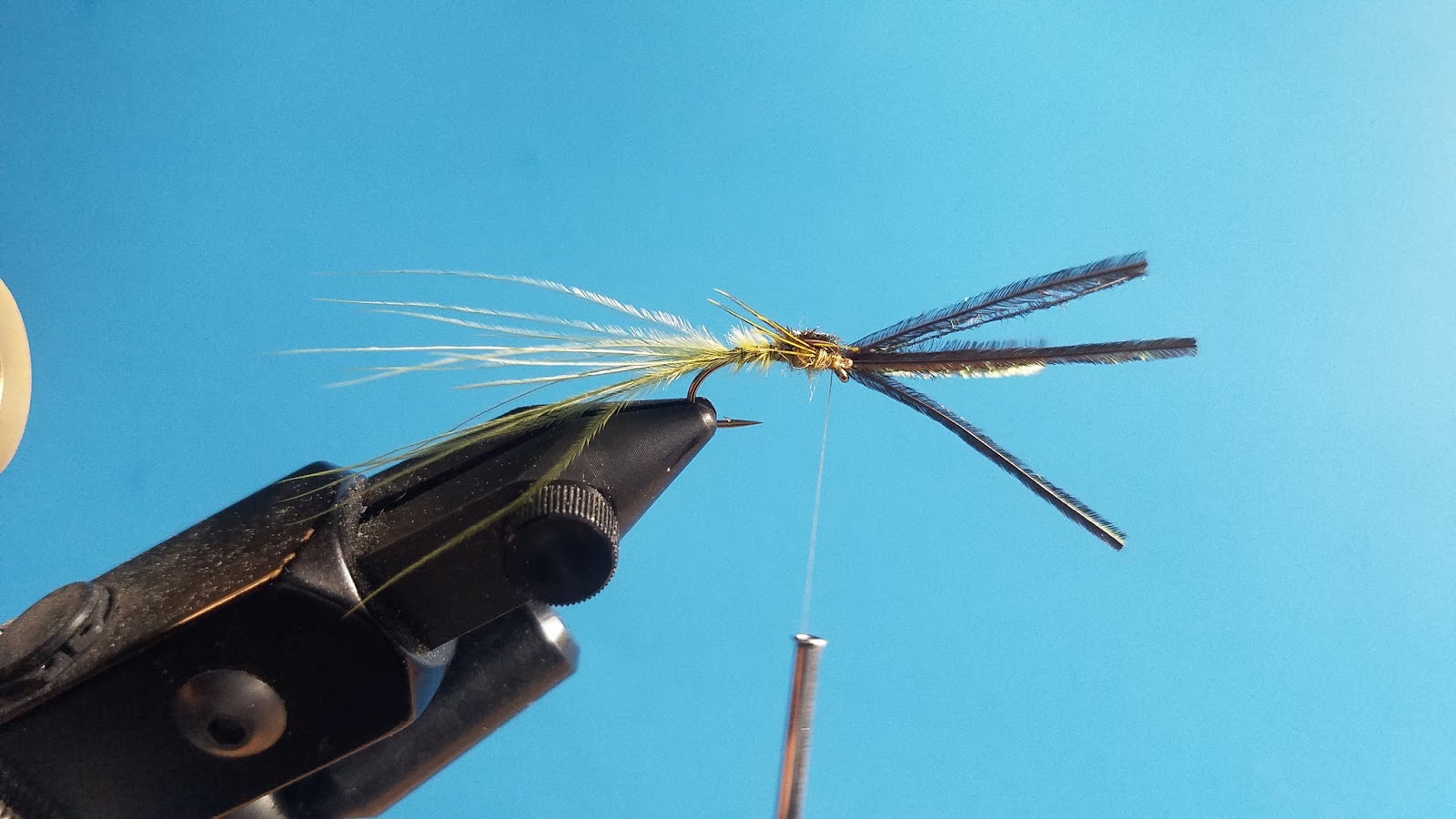
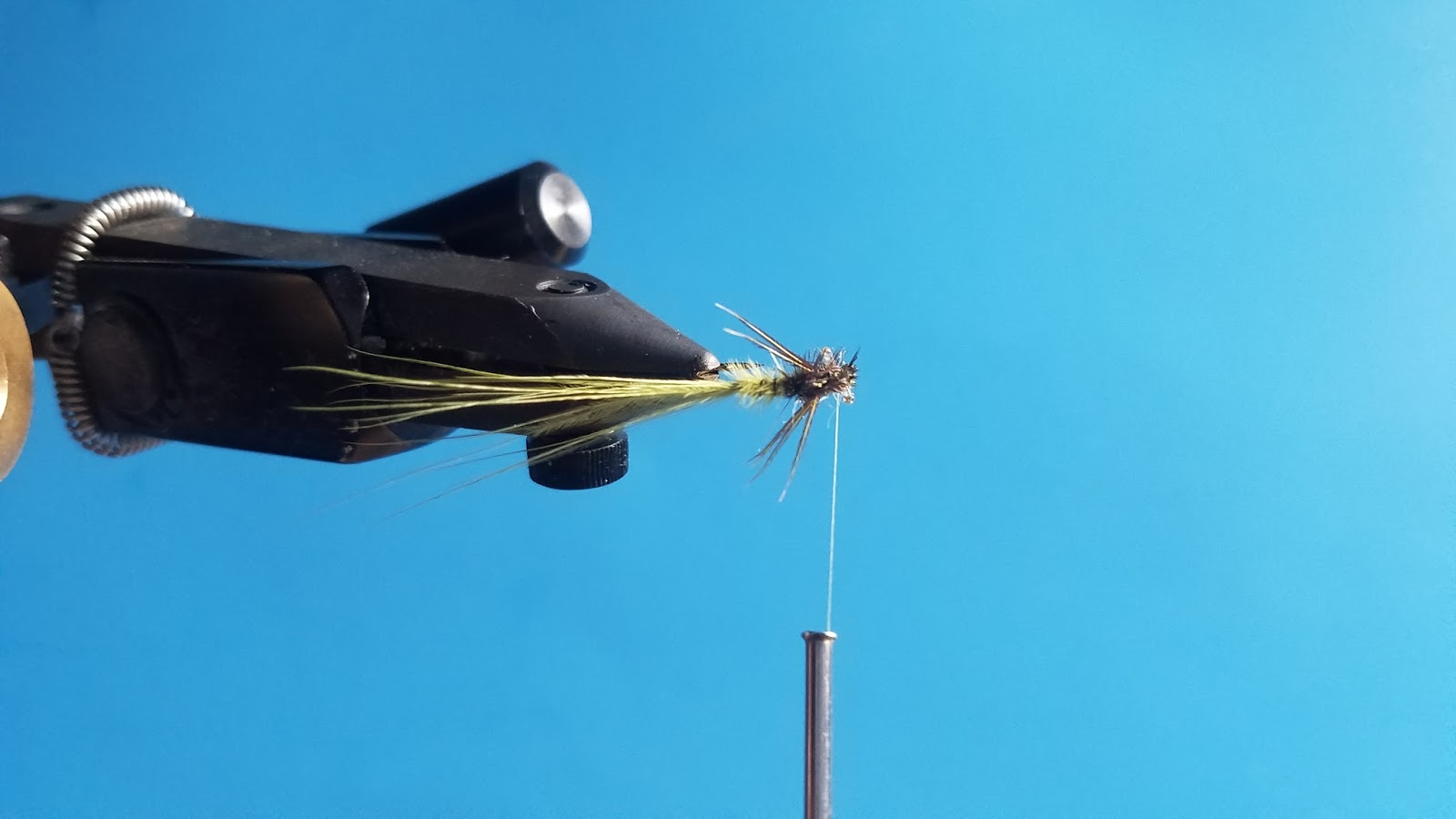
Step 11 – Pull the peacock herl fibers over the mono eyes and cut the excess.

Step 12 – Secure and whip finish twice. Pinch off a bit of the marabou fibers and finished!

